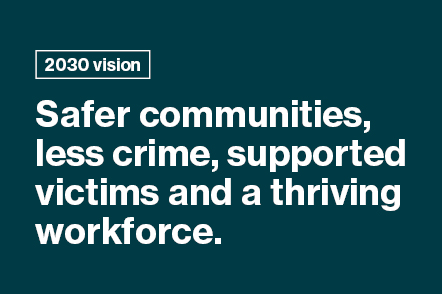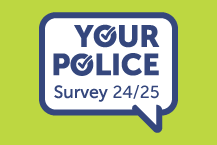Proportionate Response to Crime evaluation
The evaluation of the Proportionate Response to Crime pilot in the North East of Scotland is published today (7 March 2024).
It recommends the process should be rolled out across the rest of the service. Police Scotland intends to do this on a phased basis with ongoing engagement and evaluation.
During the 12-week trial, five per cent of crime reports in A Division (Aberdeen, Aberdeenshire and Moray) were recorded and filed for no further enquiry following an assessment of threat, harm, risk, vulnerability and for proportionate lines of investigation and evidence, freeing up 2,657 police officer hours.
The process means that in cases where there are no investigative opportunities, such as CCTV or witnesses, callers will be informed about the progress of their report more quickly, rather than waiting days for officers to make contact and inform them of the same outcome.
Since the introduction of the process public satisfaction rates have improved in the North East while more people who contact the police also said they got an appropriate response.
Prior to the pilot, 72 per cent of A Division officers reported they would regularly be allocated crime reports where no proportionate lines of enquiry existed.
At the conclusion of the pilot, 68 per cent of A Division officers noticed a positive difference to their workload and 56 per cent felt they had more time to investigate crime reports which had proportionate lines of enquiry.
Assistant Chief Constable Emma Bond said: “The Proportionate Response to Crime process is not a policy of non-investigation – we are committed to investigating crime.
“Taking a proportionate response to crime is not a new concept but we’ve never had a national process or standard across Scotland.
“Our evaluation recommends this process is rolled out across the rest of the service and we intend to do this on a phased basis with ongoing engagement and evaluation.
“Every crime report is subject of individual assessment of threat, harm, risk, vulnerability and for proportionate lines of investigation and evidence, and that won't change.
“If there are no lines of enquiry that can be pursued, then we should be clear about that with the person who has contacted us. The public will be informed about the progress of their report more quickly, rather than waiting days for officers to make contact to inform them of the same outcome.
“By taking a proportionate response to crime reporting, we can give officers more time to focus on local policing, keeping people safe from harm, protecting the vulnerable, bringing criminals to justice, solving problems, and reducing offending.
“Please continue to report crime to us. All reports are recorded and - even if they are closed - are passed to our local policing teams to be kept under review and to help build an intelligence picture enabling them to proactively respond to local concerns.
“We have listened carefully to feedback about the process during the pilot period and we’re using this important information to further shape the process and engage with partner organisations.”
The process was used in the North East when police received a report of damage to a car bumper in a car park where there was no CCTV and no note left, leaving no proportionate lines of enquiry.
Other examples include:
- A caller had not been at home for four weeks. On returning home she noticed two ornaments were missing from her front garden. The caller had spoken to her neighbours, and nobody had seen anything. There was no CCTV covering her garden. The caller was advised that the crime report would be recommended for recording but no further action.
- A caller reported that a delivery driver had left a parcel outside their door within a common close. On the caller returning home, the parcel was missing. The caller spoke with neighbours who confirmed they didn’t have the parcel, nor did they see anyone taking it. The caller advised that there was no internal or external CCTV. The crime report was recorded and recommended for closure. Local officers assessing the crime report were aware of CCTV cameras covering the main door to the building. The crime report was allocated to a local officer for enquiry.
- A caller reported that their bag was left unattended in a public park. On returning home they realised their mobile phone was no longer in their bag. The caller was unable to trace or track their phone as it was turned off, leading the caller to believe someone had found their phone. There was no CCTV covering the area. The caller was advised that the crime report would be recommended for closure. The caller re-contacted police to advise that their phone now appeared to be on and showing a live location. The crime report was re-opened and allocated to a local officer for enquiry. Following enquiries, the caller’s phone was recovered and the person responsible was traced.
Under the new process, every crime report is assessed for threat, harm, risk, vulnerability and for proportionate lines of investigation and evidence as soon as it is reported.
This enables an efficient assessment of the report that helps us quickly respond to those that are most urgent and to reduce police attendance where this is not required.
If circumstances suggest any vulnerability police officers will attend, and the new process will not be applied.
Some reports may be assessed and directly filed onto our systems as intelligence for local police officers. If no proportionate lines of enquiry are evident, the caller will be informed that they may not hear anything further.
This means callers are informed about the progress of their report more quickly, rather than waiting days for officers to make contact and inform them of the same outcome.
Since the introduction of the process, public satisfaction rates in the pilot area have risen to 70 per cent in February 2024, up from 65 per cent in November 2023.
Latest figures from our independent User Experience Survey showed that in the North East, 71 per cent of people who contacted police agreed they had received an appropriate response, rising from 57 per cent in November 2023.
The Proportionate Response to Crime evaluation will be discussed at the Scottish Police Authority Policing Performance Committee on Tuesday, 12 March, 2024.






